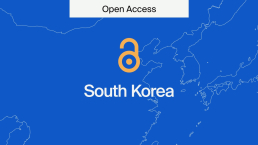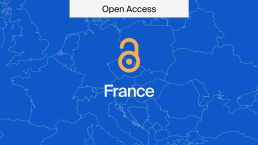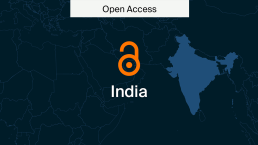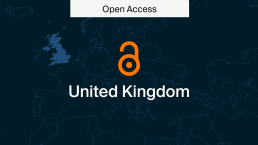
Citizen Science is Open Science That Can Tackle SDGs
Citizen science is scientific work performed by ordinary people without any special qualifications. It is recognised by the EU and USA as a key part of open science, which is a movement focusing on ensuring all parts of science are openly accessible to all.
Here, we explore definitions of citizen science, scientists’ concerns about it, and how MDPI researchers have led a citizen science project in Ethiopia that tackles 8/17 of the UN’s SDGs.
What is citizen science?
Definitions vary for citizen science, which is something we’ll explore further below. Generally, it refers to scientific work, like collecting information, that is done by ordinary people without special qualifications to help the work of, and usually led by, scientists.
In 2016, the EU’s Open Science policy established what it calls the eight ‘ambitions’ of open science. One of them is citizen science, where it argues that the general public should be able to make significant contributions and be recognised as valid science knowledge producers. As of 2024, the EU has over 300 projects on its citizen science hub.
Similarly, the US government has a centralised catalogue of federally supported citizen science projects. Its values include inclusion, collaboration, and scientific advancement. In India, there is the Centre for Citizen Science, a voluntary organisation “working as a bridge between society and research institutes”.
But what do citizen science projects look like?
Examples of citizen science projects
Japan’s national flower is the cherry blossom. Its flowering is celebrated as a signal of spring.
As far back as the 8th century CE, citizens have kept historic records of cherry blossoms trees in Japan. The date when cherries blossom flower moves every year and is being highly influenced by human-induced climate change. Therefore, the records have become useful indicators of temperature changes and how this affects flowering dates.
Another example, which we covered in a previous article, involves people uploading images from their smartphones of mosquitos onto a platform. This global project features a dashboard of images and information on mosquitos from around the world.
This not only helps scientists to distinguish between species and identify where potentially invasive and deadly mosquito species are, but it saves them the time and resources necessary to collect these data.
Why is citizen science valuable?
Open Access is a movement that seeks to make research accessible to anyone, anywhere. It aims to remove any barriers to research, like paywalls.
Similarly, citizen science seeks to remove the barriers between scientists and ordinary people during the process of creating science.
After school, many people engage with culture through art such as books and music in ways that they do not with science. This social divide reflects a view that one needs qualifications to participate in science.
At a time when misinformation is rife, especially around scientific issues, citizen science could help the public connect with scientists and increase their scientific literacy. Furthermore, it could also remove this barrier for scientists, bringing them closer to the public, thus helping them communicate their findings directly.
As we saw in the two projects above, people can provide data that would otherwise be expensive and resource-intensive to collect. At a basic level, the more people you have collecting data, the more data you’ll be able to collect, the more varied they’ll be, and the quicker you’ll be able to get them.
But are there are problems with citizens collecting data?
Concerns with citizen science
Some express concerns about the integrity and reliability of citizen science projects, especially around the collection of data.
Scientists are trained to collect data in ways that avoid biases and inaccuracies. However, surveys found that the understanding of data management principles in citizen scientists is limited.
For example, the same study highlights that water quality assessments found that emotional attachment to a site contributed to overestimating the water quality.
An article in Sustainability explores the topic of whether citizen science is good science. In an analysis of 895 citizen science projects, the authors found that 674, around ¾, did not produce a peer-reviewed paper.
Thus, they argue, the ‘science’ element of these projects is largely irrelevant as it is never validated or communicated.
Citizen engagement
The article goes on to provide a solution to some of these issues by addressing some of the ambiguities around the definition of citizen science.
They cite evidence that participants in such projects experience increased engagement with science. This is mostly associated with biological projects conducted outdoors in local areas. For these, the aim could be to benefit participants more than to produce science literature.
The authors classify projects into two types:
- Citizen science: conduct science to produce peer-reviewed outputs, with participants as data collectors.
- Citizen engagement: engage people with science, where conducting science is a secondary function and outputs are unlikely.
Citizen engagement aims to increase wellbeing, connection to nature and community, develop scientific literacy, and involve people in addressing societal issues.
Having a better classification allows citizen science project leaders to establish the necessary guidelines and training to ensure data are reliable and that the ultimate aims of the project are clear from the beginning.
Tackling the UN’s Sustainable Development Goals
The UN’s Sustainable Development Goals (SDGs) are a call to action for all countries to tackle the world’s most pressing issues collaboratively.
Much scientific research, however, remains behind paywalls. For example, climate change research remains at 55% Open Access. This means that 45% of all research related to tackling arguably the planet’s biggest challenge has restrictions to accessing it.
Moreover, only about 12% are likely to be met by the 2030 deadline set by the UN. And some of the largest gaps in the collection of relevant SDG data are in low- and middle-income countries.
Clearly, we need to do more to address the SDGs. Could citizen science help us?
Citizen science and data collection in Ethiopia
An article in Sustainability reports on a citizen data collection project in the Upper Blue Nile Basin, Ethiopia. This area has a population of around 21 million that largely depends on subsistence agriculture.
However, for rainfed-dependent agricultural countries like Ethiopia, the effects of climate change-induced rainfall variation directly affect the health of the population. Already, the intense variability of crop production due to changing rainfall levels means that around 8 million people in the Upper Blue Nile Basin are not meeting their minimum daily caloric requirements.
Moreover, hydrologic data are limited but necessary for aiding agricultural practices.
In response, the authors established a citizen science project that engages high school students and farmers:
- The high school students were trained by local university faculty and graduate students to collect soil moisture and river and groundwater depth level measurements on a weekly basis.
- The farmers were trained to conduct soil resistivity measurements.
These measurements are instrumental as early warning signs for drought and flood onset, both of which are issues Ethiopia faces.
Citizen engagement in Ethiopia
Ethiopia lacks any official monitoring for many of the necessary measurements. So, this project offers the community an opportunity to lead data collection. This means they can begin addressing the issues that affect them directly.
Moreover, it provides young people with scientific skills and training that can extend beyond the issues being directly addressed.
The authors acknowledged that development projects not only have to tackle infrastructure but also education, training, and capacity building. So, what did they find?
Benefits for participants in citizen science projects
Interviews were conducted at the beginning of and three years after the project.
The students all saw the connection between their environment and their wellbeing. They also developed an interest in participating in water resource research for the community.
After three years, they explained, their motivations for participating revolved around:
- Gaining experience.
- Enhancing community interaction.
- Building connections and knowledge.
- Solving common problems together.
This final point is key. The project helped collect essential data and showed the local youth how to continue collecting them. Such growth in the technical and social capabilities of the participants supports 8 out of 17 of the SDGs.
Overall, this project shows that citizen science can be designed mindfully and collaboratively to build ordinary people’s skills and work with them on addressing environmental issues that will shape their wellbeing.
By publishing the research as Open Access, which ensures that the article is freely accessible, the authors have ensured that the openness of collaboration and work extends beyond the process of making it and into the publication of it.
Citizen science is open science
Citizen science has the potential to address gaps in the scientific literature and give communities more power to respond to their needs, such as tackling the SDGs.
Projects can educate people about the scientific process, bridging the gap between the scientific community and the public.
MDPI has been advancing open science for more than 25 years. We regularly publish articles relating to citizen science and ensure the results are openly accessible to anyone, anywhere.
If you want to learn more about Open Access, see our article Why Open Access is Important for more.










